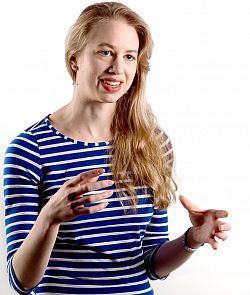Spotlight on Dr Jillian Scudder
Postdoctoral Research Fellow at the Astronomy Centre in Extragalactic Astrophysics.
Previous Research
I enjoy studying galaxies because they’re huge, there’s lots of them, and there’s lots to learn about them.
During my PhD, I looked at what happens when galaxies collide with each other. Collisions can be visually very dramatic. The galaxies can tear each other apart, with huge streamers of stars flung out from their centres. I investigated galaxies which live in the recent past. Their starlight has been travelling for about 2 billion years — which, on the 13 billion year time scale of the Universe, is not very long.
Current Research
Now, I am working with galaxies that were formed in the very distant past, about 2-3 billion years after the Big Bang, when the universe was three to four times smaller than it is now.
I want to be able to understand the reasons why nearby galaxies are so different from galaxies that lived in the Universe’s distant past. Nearby galaxies, including our own, tend to form only a few stars every year, but the distant ones are churning out hundreds to thousands of stars every year.
Distant galaxies also tend to have a large amount of dust, which blocks the visible light from the galaxy, making it hard for us to look at the galaxy’s new stars directly. Instead, we can use the glow of the dust, heated by those stars, to figure out how many stars are hiding inside the galaxy’s dust.
I use the Herschel Space Observatory’s observations. Herschel is a very sensitive thermal camera, which can very precisely measure the heat from distant galaxies’ dust.
When it comes to taking images of the glowing dust, we run into a technical problem. Our images are usually appallingly low resolution - a common problem with small telescopes. The Earth’s atmosphere blocks a lot of the thermal light that we want to observe, so you have to put your telescope in space to get above the atmosphere. Going to space with a telescope poses its own problems, because your telescope has to fit inside the rocket, so it can’t be too large.
Even Herschel, a state-of-the-art telescope, has fairly poor resolution. And on top of the resolution problem, the glow of dust from galaxies is visible for a very wide range of distances. Taking the two together, you could wind up seeing a lot of galaxies as one blob in an image.
I want to know if a hot patch on the sky is actually one galaxy or many of them. I need to have data from some other telescope that has better resolution, to tell me how many possible galaxies there are. One option is to use a new telescope like ALMA, in Chile, which can get very high resolution images, but can only look at a few galaxies at a time. The other option is to use slightly lower resolution images, but with huge swaths of the sky.
I’ve found that a given blob of hot dust is usually more than one galaxy. If you assume that the dust is hot because of the number of stars that exist inside the galaxy, this means we can split the number of new stars between two galaxies instead of stuffing them all into one. This makes both galaxies less extreme than we had thought! But they may still be at very different distances from each other.
If you find a set of galaxies which are interacting with each other, then you can start asking lots of other questions. Are they forming more stars than you expect? Maybe that’s because they’re interacting. Are they unusual in some other way? Or are they behaving like every other galaxy?
Research teaches you not to trust your analysis the first time you do it. You look at the numbers coming out of your code and you have to ask, “Did I mess that up? That looks wrong.” You spend a lot of time trying to test what you’ve just done, and at some point you run out of tests to do and have to trust that you’ve done as much as you can!
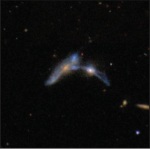
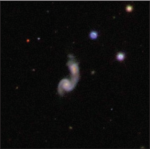
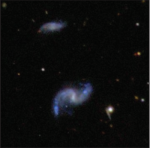
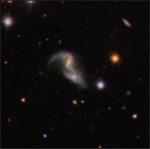
Jillian Scudder
Outreach
I have a policy that if you've bothered to ask the question, then it's a good question.
I think a lot of people believe 'maths is hard' or 'science is hard' because at some point they’ve asked a question and been either shot down, and told that’s a stupid question, why are you asking that? Or they’ve gotten an answer that they didn’t understand and didn’t feel comfortable admitting this.
I enjoy the challenge of explaining things to a general audience.
I answer questions from the general public on my blog, Astroquizzical, which is now appearing on Forbes.
I get all kinds of questions - all of them are anonymous, but sometimes people will tell me something about themselves. Recently I had a question sent in by an 80 year old, asking why they remembered the sky having more stars than they see now. This was a clever question which has a solid answer - light pollution has gotten a lot worse in the past 70 years.
I’ve spoken at Brighton Nerd Nite and was also recently a judge at The Festival of Bad Adhoc Hypotheses (BAHFest). Six people presented scientific-sounding ideas (which are total nonsense) and three judges, who are actual scientists, then ask questions that require the presenter to defend themselves. One of the talks was on why we should stop the Earth’s rotation, largely justified by it making particle physics experiments easier.
The Future
I'd like to keep puzzling out more about how galaxies work. Since astronomy has such a global job market, I will probably wind up moving to at least one more country before I have a permanent place to settle and pursue the mysteries of the Universe from there.


